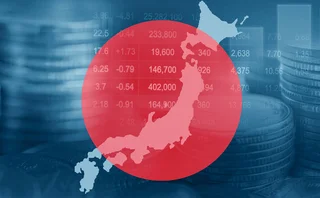
Ratings down and defaults up at Moody's
New York-based ratings agency Moody’s Investors Service reports downgrades in derivatives outlooks and increases in defaults.
The overall ratings outlook for many major asset classes is now negative, the agency said. Corporate synthetic collateralised debt obligations (CDOs), collateralised loan obligations, transactions backed by loans to small to medium enterprises, and trust preferred CDOs all now face the prospect of further downgrades.
The only derivatives classes to retain stable outlooks are emerging market CDOs and Japanese balance-sheet CDOs for large corporations.
In November 2007, London and New York-based ratings agency Fitch began a review of its ratings methodology, and in April this year arrived at new, more conservative criteria. But Moody’s denied the need for an overhaul of its own ratings system, saying it had “full confidence” in the process. A spokesperson said: “Moody's regularly changes its analytical models and enhances methodologies for a variety of reasons, including to reflect changing credit conditions and outlooks.”
Moody’s also released details of default rates over the past year. Global speculative-grade default rates continued to climb, reaching 2.7% in the 12 months to August - up from 1.4% in the 12 months to August 2007. US default rates showed a similar trend, increasing to 3.3% by the end of August from 1.4%. But European speculative-grade default rates over the past 12 months were only 0.7%, down from 3.0% in the preceding year.
Moody’s projections indicate global default rates will reach 4.9% by the year’s end, with US and European default rates reaching 5.8% and 2.3% respectively - and will continue to rise in 2009.
Kenneth Emery, Moody's director of corporate default research, said: "How high default rates eventually climb will depend in large part on the extent and duration of the developing global economic slowdown."
Default rates among European companies run against both the global and US trends. Emery commented: “Within our rated universe, we’re yet to see an uptick in terms of defaulters.” However, he added: “We do expect upwards pressure on European default rates.” Bank financing is more common in Europe, added Emery, which further skews the statistics, as results published by Moody’s apply only to rated issuers.
See also: Fitch nears end of global CDO review
Only users who have a paid subscription or are part of a corporate subscription are able to print or copy content.
To access these options, along with all other subscription benefits, please contact info@risk.net or view our subscription options here: http://subscriptions.risk.net/subscribe
You are currently unable to print this content. Please contact info@risk.net to find out more.
You are currently unable to copy this content. Please contact info@risk.net to find out more.
Copyright Infopro Digital Limited. All rights reserved.
You may share this content using our article tools. Printing this content is for the sole use of the Authorised User (named subscriber), as outlined in our terms and conditions - https://www.infopro-insight.com/terms-conditions/insight-subscriptions/
If you would like to purchase additional rights please email info@risk.net
Copyright Infopro Digital Limited. All rights reserved.
You may share this content using our article tools. Copying this content is for the sole use of the Authorised User (named subscriber), as outlined in our terms and conditions - https://www.infopro-insight.com/terms-conditions/insight-subscriptions/
If you would like to purchase additional rights please email info@risk.net
More on Regulation
Prop shops recoil from EU’s ‘ill-fitting’ capital regime
Large proprietary trading firms complain they are subject to hand-me-down rules originally designed for banks
Revealed: the three EU banks applying for IMA approval
BNP Paribas, Deutsche Bank and Intesa Sanpaolo ask ECB to use internal models for FRTB
FCA presses UK non-banks to put their affairs in order
Greater scrutiny of wind-down plans by regulator could alter capital and liquidity requirements
Industry calls for major rethink of Basel III rules
Isda AGM: Divergence on implementation suggests rules could be flawed, bankers say
Saudi Arabia poised to become clean netting jurisdiction
Isda AGM: Netting regulation awaiting final approvals from regulators
Japanese megabanks shun internal models as FRTB bites
Isda AGM: All in-scope banks opt for standardised approach to market risk; Nomura eyes IMA in 2025
CFTC chair backs easing of G-Sib surcharge in Basel endgame
Isda AGM: Fed’s proposed surcharge changes could hike client clearing cost by 80%
UK investment firms feeling the heat on prudential rules
Signs firms are falling behind FCA’s expectations on wind-down and liquidity risk management







